
There are places in the world that you feel drawn to. Varanasi, a city in northern India, has always been one of those places for me, and even though this was my second time visiting the city, it never ceases to amaze me.


 Nothing like sitting down and enjoy a cup of chai
Nothing like sitting down and enjoy a cup of chai
Varanasi lays on the shore of the Ganges river and it is the holiest city in Hinduism and Jainism, and played an important role in the development of Buddhism. It is believed, that when a person dies within the city, or has their remains cremated in the temples alongside the Ganges, they attain instant moksha (release) of the cycle of death and rebirth—a similar principle to attaining Nirvana in Buddhism. Because of this, countless people make the journey to Varanasi to spend their last days, and there are countless funeral pyres cremating bodies along the river throughout the day. It is a city where death is intertwined with life, and where death is venerated, welcome, and never feared.
 Cricket game on the shores of the Ganga
Cricket game on the shores of the Ganga
 When passing sacred water in Varanasi you can relax, Shiva’s cobra has got your back.
When passing sacred water in Varanasi you can relax, Shiva’s cobra has got your back.



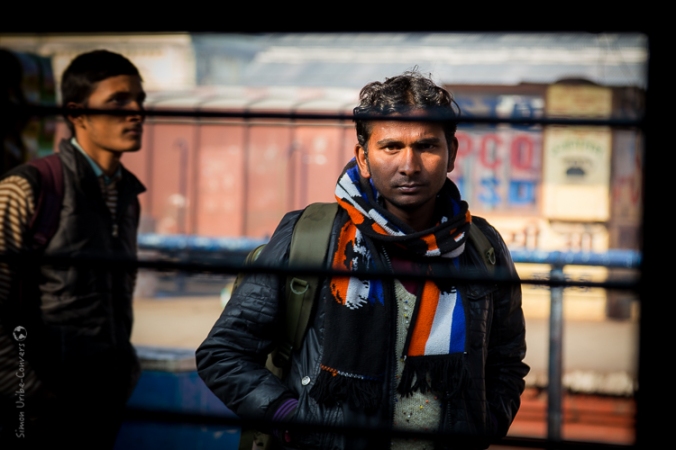
As a main artery, the Ganges runs along the city for miles and it’s where most spiritual events are held. The river is very much alive in Varanasi, with people bathing in the mornings or doing puja, and with countless boats transporting worshipers and tourists from ghat to ghat. The Ganga, as it’s also known, is both a place for the living to go about their day and for the dead to rest.




 The Ganges is an integral part of people’s live in Varanasi
The Ganges is an integral part of people’s live in Varanasi
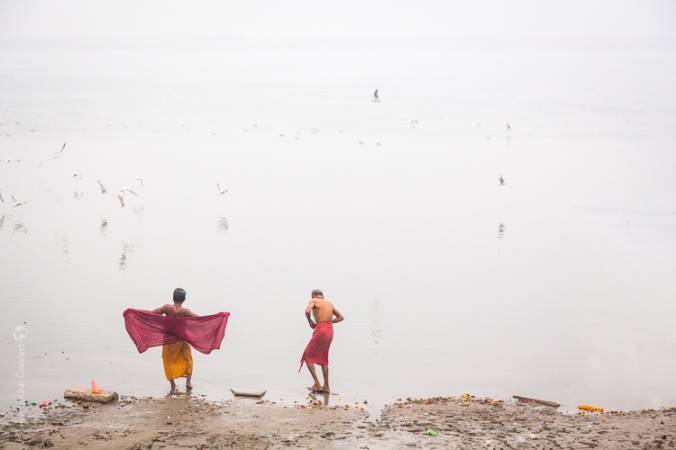

 Countless boats transport worshipers from ghat to ghat
Countless boats transport worshipers from ghat to ghat
Cremation is the most common type of funeral in India and the cremation ceremony is one of the most fascinating events I have seen. As mentioned above, Varanasi is the holiest place in Hinduism to pass away or to be cremated, and the ceremony rituals reflect this. This is what we learned from talking to people in Varanasi, and we hope that we are not misspeaking in this post—the last thing we want to do is to offend Hinduism and its followers, or to not convey the ceremonies properly.


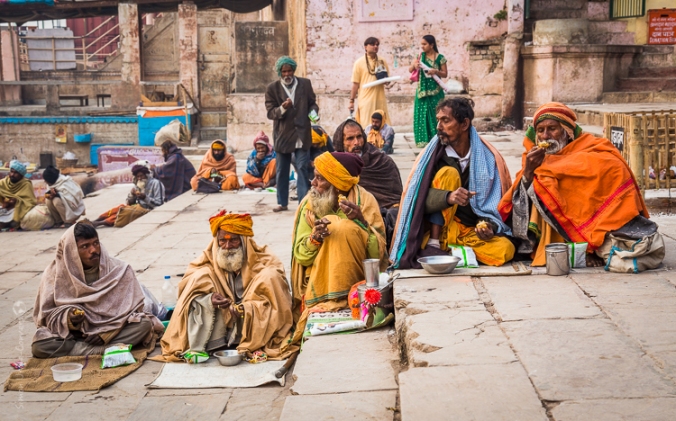

The body of the deceased is wrapped in a fabric (different colors for different people) and is carried on a bamboo stretcher by male members of the family from their house to the Ganges. This is usually done by foot through the narrow streets of the old city where no cars can fit. When they arrive at the river, the body is washed and purified in the holy waters of the Ganga and then placed on a large pyre of wood. The eldest son in the family is also prepared for the ceremony by shaving his head, dressing in all white, and washing himself to purify in the river. He is the person in charge of lighting the pyre, and he can only do so with some fire kindled in the eternal fire—a fire that is kept in a temple and that has been lit uninterruptedly for centuries. As the funeral pyre starts to burn and the fire becomes stronger, sandalwood dust and incense are added to the pyre, and a designated person who works at the ghats is in charge of adding wood, keeping the pyre lit, and making sure that the body burns completely.
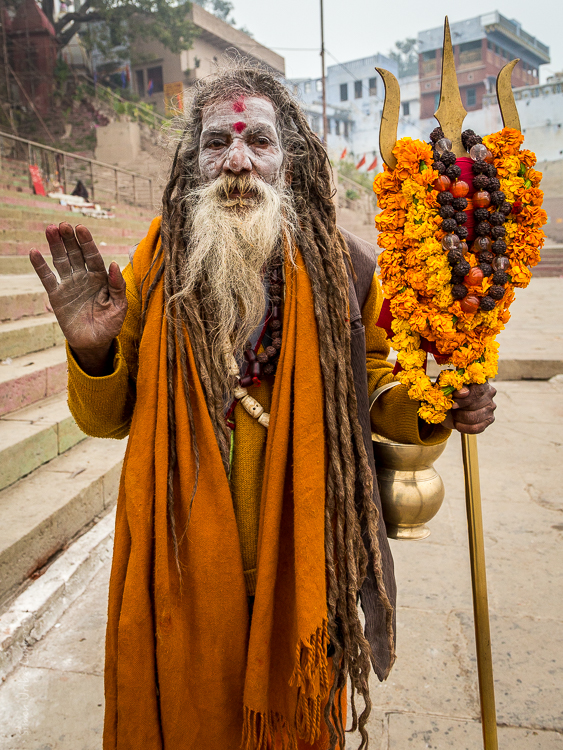 Sadhus are holy men who have renounced all their material possessions
Sadhus are holy men who have renounced all their material possessions
 Funeral wood is an important business in the city
Funeral wood is an important business in the city
The cremation takes around three hours and can burn through 350 kg (770 lb) of wood. This is no small number, especially when 1 kg of wood costs around $2 USD (150 INR) and far exceeds what many of the people in this country, and other developing countries, earn in a month. The high cost of the wood results in some families throwing unburned bodies into the river. Everyone is cremated in Varanasi with a very few exceptions: babies and small children are thought to be pure and thus their souls don’t need to be purified—the same is true for Sadhus (holy men) and pregnant women. A fascinating exception is of people who died because of a snakebite. Snakes are a manifestation of Lord Shiva, and some people believe that you achieve immortal life in another world if you die from one. Unburned bodies are tied to rocks and thrown in the Ganga.
Finally, when the cremation is done, the eldest son collects some water from the river in a ceramic pot and pours it into the ashes. He then breaks the pot and the ceremony has ended.



Nobody cries and no one shows signs of grief or mourning as it is believed that the dead are off to a world far better than the one they left behind. Women are not allowed at the ceremony because they may cry or sob and this might interfere with the soul reaching its resting place. We even heard (although it sounds extreme) that women were not allowed because there had been incidents of mourning wives jumping into the burning pyres. For non-Hindu, the ceremony might seemed unnatural or strange but I think that not fearing death, and rather welcoming it, is actually something we should learn from Hinduism.
After spending some very interesting and eye-opening days in Varanasi, it was time for us to move on. Prepared for the 18 hour journey towards Aurangabad, we boarded a sleeper train and let the landscapes of central India pass us by.
Talk soon, metta,
Tracy & Simon
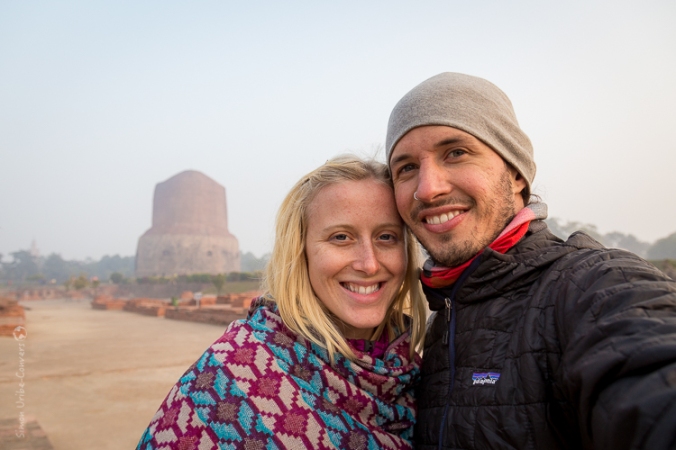 We also visited Sarnath, a place where Gautama Buddha first taught the Dharma
We also visited Sarnath, a place where Gautama Buddha first taught the Dharma
Incredible pictures! The colors seem so vibrant.
LikeLiked by 1 person
Thanks a lot Dustin! It’s an incredible city to photograph.
LikeLike
Great work bro keep it up
Have you visited any other city in india??
LikeLike
Hey Al,
Yes, I’ve visited many other cities in India; this is my third trip. Blogging is slower than traveling!
LikeLike
Fabulous photos!
LikeLike
Splendid photos… its a great place…
LikeLike
Thank you! It is an incredible place indeed!
LikeLiked by 1 person